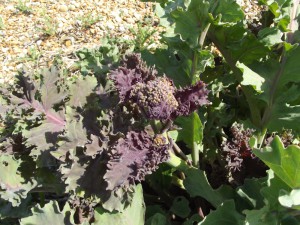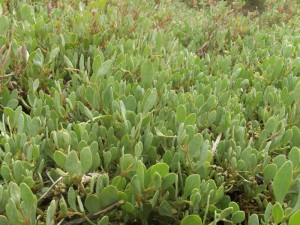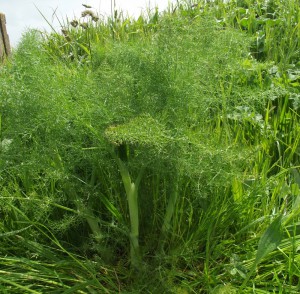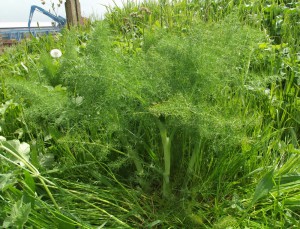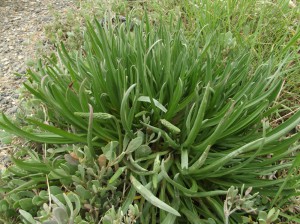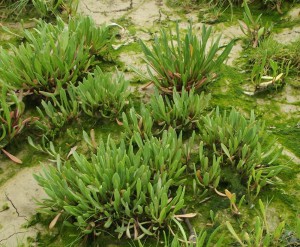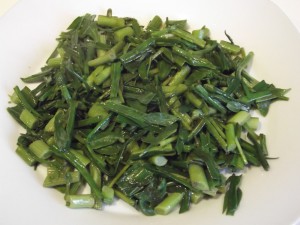Email: geoffdann@hotmail.com
Phone: 07964 569715
26/05/2015
This creation is very loosely based on a dish by Lukas Pfaff. I couldn’t afford a suckling pig, so I re-invented it (today) using a much cheaper cut of meat.
The key foraged ingredients are sea-purslane, which can be found by the ton on just about any salt marsh or river estuary in the country, and wild fennel, which is a bit harder to track down but can be locally quite abundant, especially in coastal areas. I accompanied it with some sea kale which just happened to be in area I was foraging.
Main Ingredients (for 4 people):
Pork belly joint 1.5 to 2kg.
Several generous handfuls of fresh, tender, new-growth sea-purslane.
The top two-thirds of 6 or 7 wild fennel plants.
1) Wash the sea-purslane. Take half of it and spread it at the base of a casserole dish.
2) Separate the fluffy top leaves of the fennel and the smaller bits of stem from the thicker bits at the base. You don’t want any really tough bits of stem – nothing much wider than the diameter of a pencil. Reserve the stems for later. Put the fluffy leaves and the smaller stems in a layer on top of the sea-purslane.
3) The belly joint will usually come rolled in string, which makes the first part of the process easier: use a sharp knife to cut the joint into 4 strips. Remove the string, unroll the strips and place them on top of the fennel, skin side up.
4) Put the casserole dish (lid on) in an oven and cook for three hours at 165° (or fan 150°).
5) Pick the leaves off the stems of the other half of the sea-purslane. Keep for later.
6) Just before the three hours are up, start steaming the fennel stems, and put the potatoes on if you want to serve with mash. Add the sea kale a little bit later if you’re serving that too.
7) Take the belly strips out of the casserole dish, put in another dish and return to the oven to keep warm (turn the oven down low).
8) Take the layer of fennel out of the casserole dish (doesn’t matter if some bits escape). If you can get any juices out of the fennel, then add them back into the dish.
9) The dish will now contain the meat juices, including plenty of oil, and some very well-cooked sea-purslane. Use the back of a wooden spoon to mash the sea-purslane into a pulp, in the oils and juices from the meat, to make a sauce (you may want to remove some of the oil first, if there’s too much). Put the sauce in a jug and put the jug in the oven to keep warm.
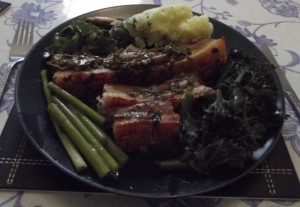
Slow-cooked pork belly with sea-purslane and wild fennel, served with sea kale, mashed potato and mushrooms.
10) Heat some butter and olive oil, and plenty of freshly ground sea or rock salt, in a frying pan and then fry the belly strips, skin-side down. This is purely to make the skin go crackling-like and should take about 4 minutes.
11) Meanwhile, in another pan, sauté the second half of the sea-purslane for a couple of minutes in butter and/or olive oil. I also fried some mushrooms to go with the dish.
12) To serve, place the belly strips with their crackling side sideways, and drizzle the sea-purslane sauce over the top. Serve with the sautéed sea-purslane, mashed potato, steamed wild fennel stems (with plenty of butter) and optional sea kale (with plenty of lemon juice).
Sorry about the poor quality photo – I was in a bit of a rush to try my new creation!

